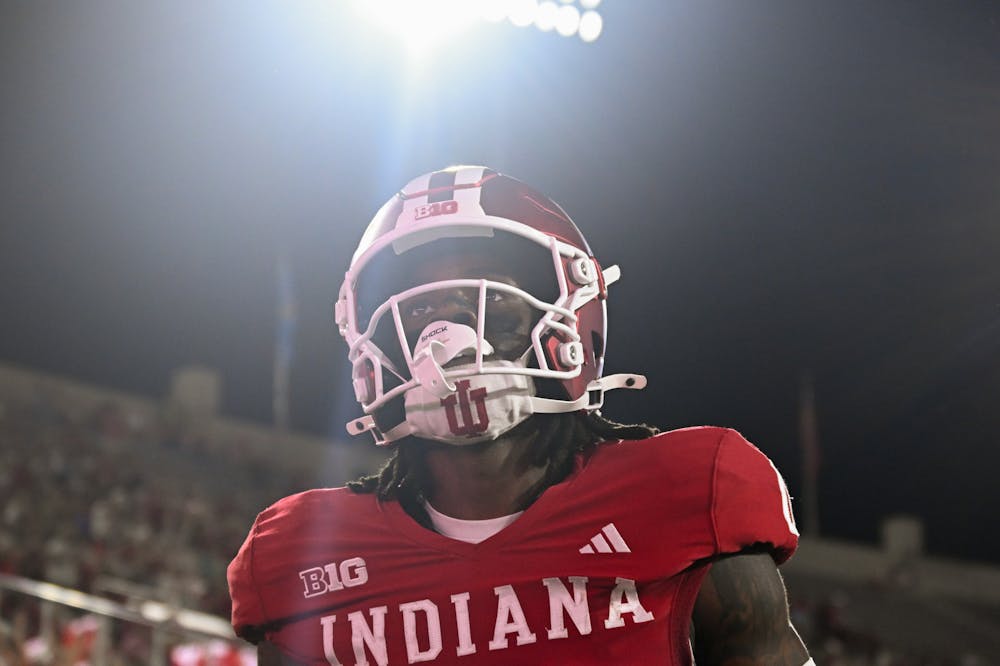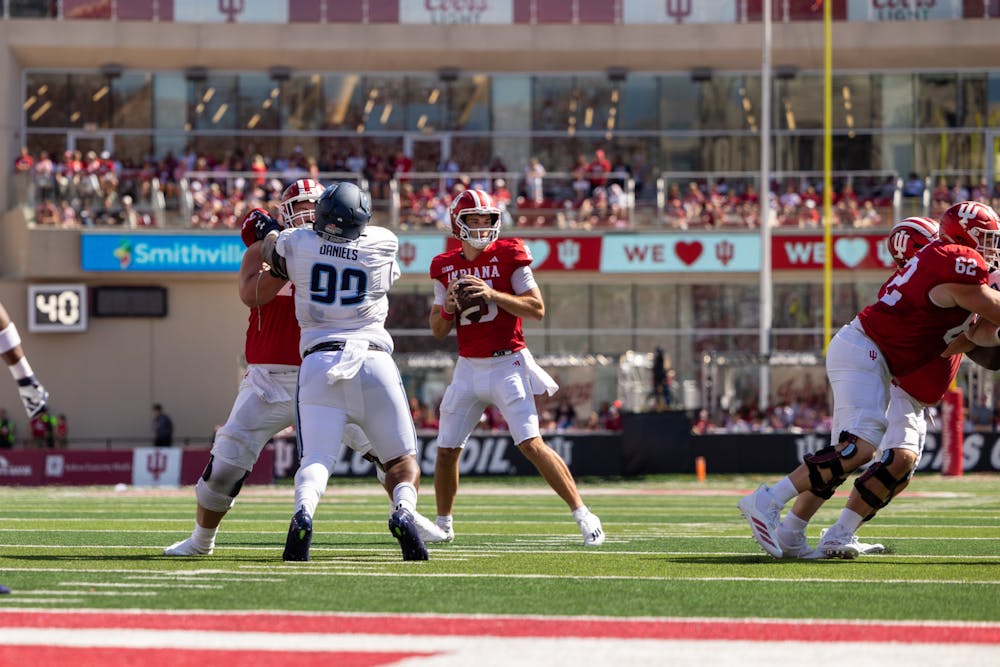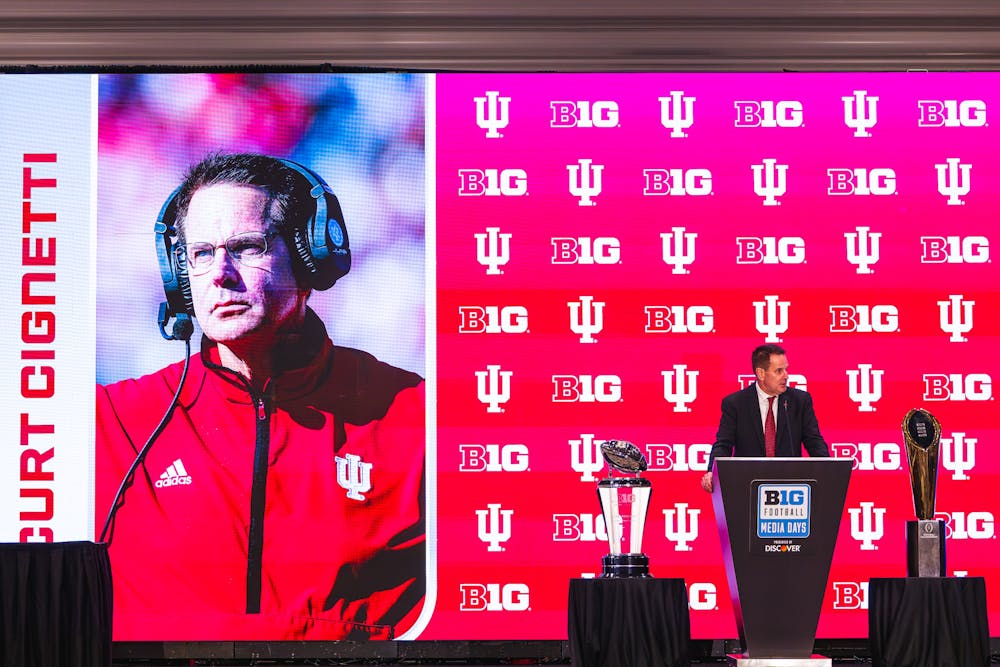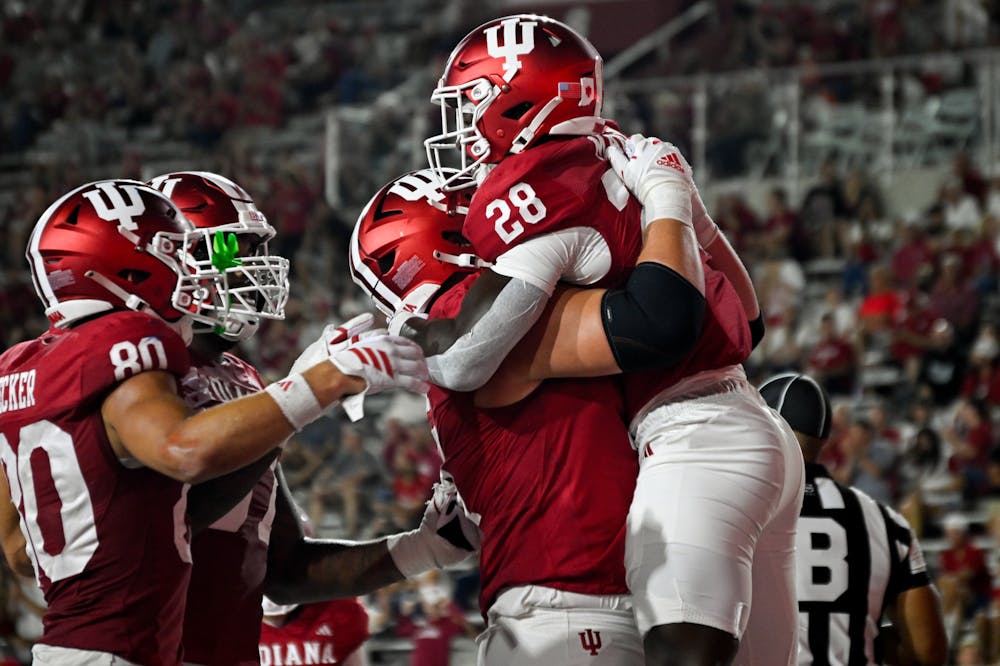There has been a lot of commotion about Indiana football’s strength of schedule over the past few months, and for good reason: The Hoosiers haven’t exactly faced world-beaters in their non-conference games. We can all agree that Old Dominion, Kennesaw State and Indiana State won’t light up the national college football landscape. They have been dubbed “cupcakes” by armchair analysts around the nation.
Amid detractors shouting that Indiana should “play a real team,” Curt Cignetti’s group had plenty to gain from its three tuneup games, and it took advantage. No. 22 Indiana (3-0) shellacked Indiana State (2-1) on Friday night at Merchants Bank Field at Memorial Stadium, winning 73-0 in the program’s largest shutout victory since at least 1901.
Indiana’s “soft” schedule did exactly what it was supposed to do. It prepared a team with a mix of familiar faces and new additions for a conference slate that features some of the nation’s best, including trips to No. 4 Oregon and No. 2 Penn State in addition to a primetime home matchup against No. 9 Illinois on Saturday, Sept. 20. All three are widely regarded as CFP contenders. Oregon and Penn State are among the frontrunners to win the national championship.

The Hoosiers outgained the Sycamores 680-77 and held the visitors without a first down until the final five minutes of the first half. It was obviously a far more complete game than Indiana’s 13-point win over Old Dominion in week one, but the progress goes far beyond the raw numbers.
Cignetti said after week one that everybody in the building realized the performance wasn’t up to snuff. Indiana’s defense gave up a 75-yard touchdown run on the first play from scrimmage. Quarterback Fernando Mendoza was off-rhythm at times in his Hoosier debut.
“He left some plays out there,” Cignetti said. The Hoosiers, who led the nation in red zone efficiency in 2024, scored just two touchdowns in seven trips to the red area against Old Dominion.
Week two was a step in the right direction — one would hope that a 47-point win constitutes improvement — but not decisive enough for the relentless Cignetti. While the Mendoza-led offense showed considerable progress, the defense lagged behind.
Despite losing 56-9, Kennesaw State mounted four consecutive drives of 44 yards or more. The Owls kicked their three field goals during this stretch. Indiana’s self-inflicted mistakes, missed assignments and lapses in urgency were still there, even if the lopsided score said otherwise.
Cignetti emphasized multiple missed opportunities on offense and inconsistent pre-snap routines that led to numerous chunk plays on defense. He called for more attention to detail.
Six days after Cignetti made the call, Indiana’s first-teamers answered. On Friday, the Hoosiers led Indiana State 45-0 at halftime. They had 383 total yards to the Sycamores’ 10.
Mendoza was nearly perfect. He began the evening with 14 straight completions and finished the first half 19-for-20 passing for 270 yards and five touchdowns, one shy of tying the Indiana single-game record.
Save for a couple of questionable decisions on option plays, he was sharp, leaps and bounds better than just two weeks ago. He and his receivers looked like they were in lock-step. The Cal transfer QB showed why he is so highly-touted, repeatedly placing the ball where only his receivers could make a play. Mendoza did not step back onto the field in the second half, giving way for Indiana’s second-team offense to put up 28 points of its own and bring the game to its 73-0 conclusion.

Wide receiver Omar Cooper Jr. had a career day, catching 10 passes for 207 yards and tying the late James Hardy’s program record of four touchdown receptions. The numbers are great, sure, but that is what a College Football Playoff-caliber team should do when facing an opponent of Indiana State’s caliber. Great teams are supposed to do these things against vastly inferior competition.
“We accomplished what we wanted to accomplish,” Cignetti said Friday. “Defense was a point of emphasis for me and I expected us to have a dominant performance.”
Television executives may not salivate over early-season tuneup games, but in a sport with no preseason where revolving-door rosters are becoming increasingly commonplace, expecting a team to be a well-oiled machine from the jump is a dangerous game.
We all saw the firestorm that took place when No. 8 Alabama was upset — rather, dominated — by Florida State to start the 2025 season. You can take Kalen DeBoer out of Tom Allen’s Indiana, but you can’t take Tom Allen’s Indiana out of Kalen DeBoer.
Preseason No. 17 Kansas State is off to its worst start since 2008, and it all began with a loss to No. 22 Iowa State in Ireland. One would be remiss to ignore No. 12 Arizona State’s 24-20 loss at Mississippi State and No. 13 Florida’s shocking last-second home loss to USF.
While the expanded CFP leaves some margin for error, Alabama and Arizona State’s respective CFP hopes have already taken huge hits. Kansas State is spiraling toward a lost season. Florida is, yet again, facing a swath of speculation around head coach Billy Napier’s future in Gainesville.
It begs the question: Why would Curt Cignetti, who was tasked with turning around college football’s perennial doormat, want to go through that kind of trouble? The Big Ten is loaded with a plethora of opportunities for its teams to stake their claim for a CFP berth.

Think back to Big Ten Media Days, when Cignetti directly addressed critics of Indiana’s scheduling practices: “We figured we would just adopt (the) SEC scheduling philosophy,” he said on July 22 in Las Vegas.
In mid-August, the SEC announced that it would join the rest of civilized society (read: the Big Ten) and play nine conference games beginning in 2026. For now though, we’re stuck with a November slate that features Tennessee versus New Mexico State, Texas A&M versus Samford and Georgia versus Charlotte.
Tennessee’s “gauntlet” also features ETSU and UAB. Georgia has already faced Marshall and Austin Peay. You can’t deride one program’s approach to non-conference games while simultaneously scheduling opponents of a similar caliber.
At least Indiana got the soft part of its schedule out of the way early. One could view Indiana’s approach as a preseason of sorts, where the Hoosiers have the opportunity to work through the hiccups that are commonplace early in the season. The connection between quarterback and receiver isn’t formed in an instant. Defenses need time — live, in-game reps — to gel as a unit.
In its current state, Indiana’s non-conference schedule means that, when two losses can put you on the bubble of the CFP, Curt Cignetti’s team is ready to forge a path through one of the most top-heavy leagues in the FBS.
While it is true that Indiana will likely not go 9-0 in Big Ten play given the meat grinders that await in Eugene and Happy Valley — not to dismiss Indiana’s Sept. 27 trip to Iowa, because we all remember what happened in 2021 — the Hoosiers have left themselves more room for error than they would otherwise have. A win means more than a quality loss ever could, or should. There’s a greater chance that when the dust settles, they’ll be one of the 12 teams left in the fight on CFP Selection Day.






